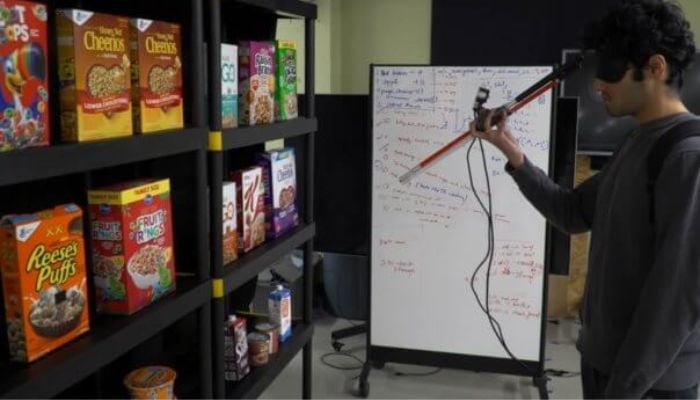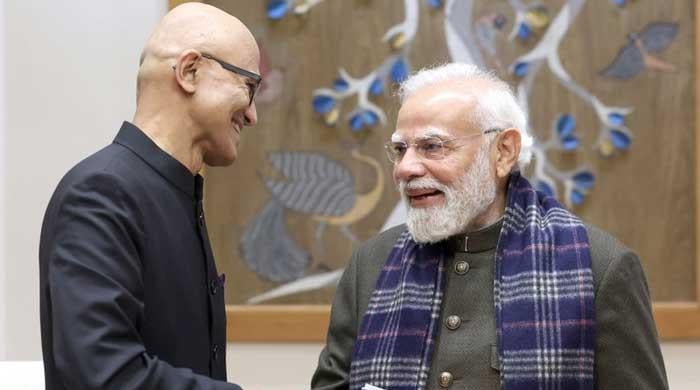'Smart' walking cane for visually impaired people in the making
Walking stick actively maps immediate region using camera and computer and then employs vibrations in handle to direct users
January 25, 2023

People who are visually impaired may now find it easier to move around in their daily lives, thanks to artificial intelligence and smart technologies. Engineers at the University of Colorado–Boulder are developing a "smart" walking stick that would assist the blind in doing daily chores like finding a seat and grocery shopping.
The device combines "assistive technology and Silicon Valley" according to the study's authors, who presented their study at the 2022 IEEE/RSJ International Conference on Intelligent Robots and Systems in Kyoto, Japan.
“I really enjoy grocery shopping and spend a significant amount of time in the store,” said study co-author Shivendra Agrawal, a doctoral student in the department of computer science, in a university release. “A lot of people can’t do that, however, and it can be really restrictive. We think this is a solvable problem.”
The walking stick initially appears to be a typical cane that you can purchase online. However, if you look closely, you'll notice a number of advancements made with the aid of computer and camera technology. The walking stick actively maps the immediate region using a camera and computer and then employs vibrations in the handle to direct users to their desired location. The cane also has a voice assistant that can give instructions like "move a little bit to your right."
The smart cane may assist millions of people in becoming more independent.
"Computer vision and AI are improving, and people are using them to build self-driving cars and similar inventions,” Agrawal added. “But these technologies also have the potential to improve the quality of life for many people.”
The study's authors asked an age-old question: where do I sit?
According to an earlier study, these simple choices put a lot of pressure on a blind or visually impaired individual. To test if the smart walking stick could make the solution to this seated issue more straightforward, the study's authors converted their facility into a temporary cafe. This required the addition of numerous chairs, customers, and a few barriers like signs that are typically present in cafés.
A laptop and a sophisticated walking stick were given to each participant in a bag. With a camera mounted close to the handle, they rotated the stick multiple times to look around the room. The laptop generated algorithms based on the room's attributes and determined the best path to the greatest seat, much like a self-driving car might. The "correct chair" was discovered by participants in 10 out of 12 trials of different difficulty levels.
While the study's authors claim that their electronic cane is designed for blind and visually handicapped people, the experiment was conducted on able participants who were blindfolded.
The expansion of the kinds of situations in which people might utilise a cane is another direction the study's authors are headed. In an unpublished study, Agrawal and his co-authors had participants search grocery stores for a certain item while using a cane. The facility was transformed into a temporary grocery shop with shelves stocked with various kinds of cereal. In the software, the authors built a database of product images, such as boxes of Honey Nut Cheerios or Apple Jacks. To find the precise item the user was seeking, the walking stick searched the shelves.
Although the innovation seems intriguing, it won't be available to the general public for some time. The authors of the study intend to make certain adjustments, such as making it more streamlined and compact.









